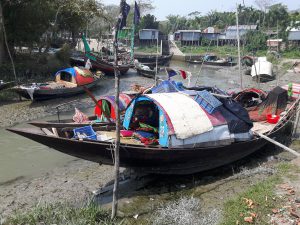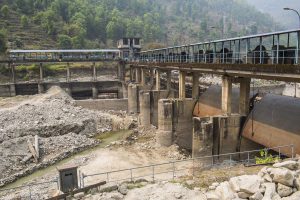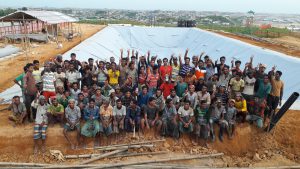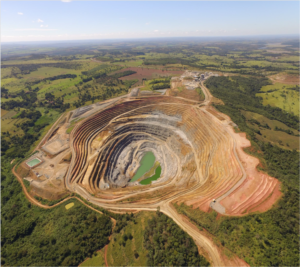South Asia, as a whole, is already facing a water crisis, and it is likely to get worse. Afghanistan, Pakistan and India are already classified as water scarce regions, and crippling drought played out in Afghanistan last year and into this year. Farming is in crisis, with springs drying up in the Hindu Kush Himalayan (HKH) region, which hosts 240 million people, and climate change is leading to both more floods and droughts as rainfall becomes more erratic.
What is often missed in this analysis is how development patterns are likely to exacerbate these problems. Golam Rasul, chief economist at the International Centre for Integrated Mountain Development (ICIMOD), has looked at these challenges in a recently submitted paper to the International Journal of Water Resources Development. Sharing the draft of the paper at the sidelines of the launch of ICIMOD’s Hindu Kush Himalayan Monitoring and Assessment Programme report, Rasul emphasised that any long-term vision of development of the HKH region has to look at the water-food-energy nexus.
The paper lists a series of issues which are already impacting each other, and will only become more interlinked over time. These include a large and growing population of 1.7 billion, a fairly high rate of economic growth, a demand for energy and food, and rapid urbanisation – all of which will also be impacted by the effects of climate change.
An unquenchable demand for development
It is worth quoting in full the specific challenges laid out in the paper that this region faces, which drive the “development at all costs” agenda of most politicians. Quoting statistics from a variety of organisations, such as the World Bank, UNICEF, FAO and WHO, Rasul writes, “Nearly half of the world’s poor (46%) and more than one-third (35%) of the world’s under-nourished live in the region, about 400 million (23% of the total population) have no access to electricity, more than 500 million (29%) use traditional biomass for cooking, more than 200 million (12%) lack access to safe drinking water, more than 900 million (52%) do not have good sanitation services, more than 200 million (12%) face chronic food shortages, and about 300 million (17%) are undernourished.”
Despite economic growth from 2008-18 doubling per capita GDP in South Asia, an estimated 16% of the total South Asian population continues to earn less than USD 1.90 a day.
These numbers represent an enormous demand for a better future by one-fifth of the global population, and thus it is little surprise that most decisionmakers in South Asia seem to value economic growth at all costs. While Rasul understands this, his concern is that strategies to deal with these issues tend to be divided by sector and country, leading to sub-optimal results within countries, and especially between countries.
The coal crisis in India
An excellent example of this can be found in the report titled, “Energy-Water Nexus” published by the Vasudha Foundation in India in December 2018, examining the interaction between coal plants and water usage. The coal plants are ostensibly needed to provide energy for economic growth, but they use huge amounts of water. The report cites the Central Electricity Authority of India, which stated in a 2012 report that on an average Indian coal plants use eight times more water to generate a MW of power than coal plants in developed countries. Even coal plants in China use less than a third of the water that India does.

Furthermore, although the coal plants are ostensibly for the purpose of development, and raising the standard of living among the population, their impact on local water supplies means that those living near the coal stations are deprived of water, or if they receive it at all, it is polluted. This was made clear by an examination of the villages near the Chandrapur district of Maharashtra, which hosts 18% of the power plants in India’s most developed state. Added to this, water shortages have led to a critical underperformance by coal plants, with efficiency levels dropping as water availability became scarce. The current non-performing assets in India – bad loans – outstrip that of any large economy. In September 2018, about 13% of the country’s INR 1.74 trillion (USD 25.5 billion) of bad debt was for coal plants – many of which may never be built.
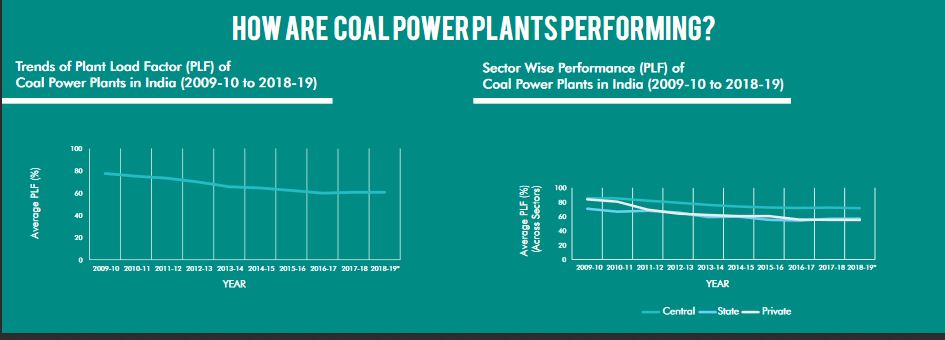
Transboundary rivers as ‘regional public goods’
This is an example of what Rasul means when he writes that, “efforts in water resources development in South Asia are mostly single purpose and sectoral and without a broad regional approach.” His advice is for a broad planning approach, and he champions two types of large projects, both of which imagine the transboundary rivers of South Asia as “regional public goods” to be jointly managed. These would require transboundary rivers to be managed by energy, water, irrigation and transport departments – often isolated from each other even within countries – across multiple countries.
The first is storage dams in high Himalayan areas that can catch and hold monsoon rains. South Asia – except for Afghanistan – receives more than 60% of its rains in the four months of June to September. Most of this runs off and the countries of South Asia, unlike those of the US, China, and Egypt, have very limited storage capacity. As the monsoons are destabilised by climate change, leading to more floods and droughts, this lack of storage capacity will critically weaken the region’s ability to provide water for crops, recharge groundwater, or retain enough waters in its rivers for navigation, Rasul argues.
His second big project is for revitalising the inland waterways, pushing trade between South Asian countries, lowering transportation costs, and working to make sure there is enough water in the rivers. Both the storage dams and inland waterways can only work within a framework of multi-sectoral and multilateral support, with the countries of South Asia cooperating with each other and taking care of each other’s needs in order to pursue their own core national interests. Rasul gives an example of how the Koshi basin can be used for multiple purposes, with storage dams built in Nepal’s Saptakoshi area storing a quarter of the monsoon flow, and also helping irrigate the downstream Ganga basin in India over the whole year, while at the same time guaranteeing adequate river flow to connect Nepal, India and Bangladesh for trade and transport via inland waterway.
What Rasul ignores, however, is that both the hydropower industry (which would make storage dams) and the inland waterways project, have – so far – been anything other than multi-sectoral. Like large coal plants, hydropower projects in South Asia have routinely ignored the concerns of others, displacing millions, and creating crises for local ecosystems. Furthermore the revival of local water storage projects, based on traditional practices, have had more success than large reservoirs for small farmers who are often less able to access canal systems. The inland waterways project, though much newer, has also yet to take into account the challenges of local fisher communities. This may mean that it is not the multi-sectoral and multilateral approach that is needed to deal with the challenges that South Asia faces.
This is a key concern, because the pressure will be felt most by marginalised populations and small farmers. As Rasul notes, “cereal demand [is] projected to more than double by 2030 from 241 million tons in 2000. This will create further pressure on the limited area of arable land, which has already reduced from 0.4 ha per capita in 1960 to 0.12 ha per capita in 2013. The declining land per capita will necessitate intensifying food production, which will require more water and energy.” This is unlikely to succeed without incorporating small farmers as key stakeholders, the very people that have been sidelined by a process of large projects taken up, ostensibly to improve their well-being.
![<p>Pakistan’s explosive population growth means less water for everybody [image by Ghulam Rasool]</p>](https://dialogue.earth/content/uploads/2016/06/Watermill-by-GR.jpg)

